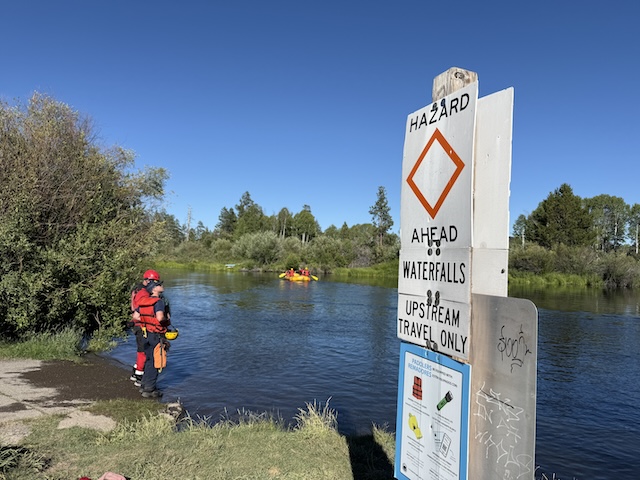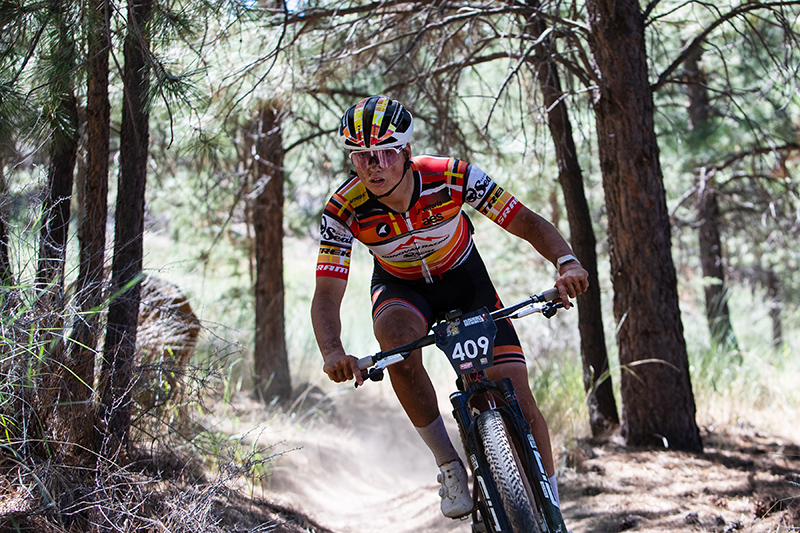Going round and round about roundabouts
Published 5:45 am Thursday, June 8, 2023

- David Jasper
Today we’re talking about roundabouts, of which Bend has approximately 17 billion.
Actually, there are 48 roundabouts in the city, and five new ones in various stages of planning, according to Anne Aurand, communications director for the City of Bend. Outside the city there are more roundabouts on nearby highways. Don’t even get me started on Sunriver, or as I call it, Sunroundabouter.
Trending
Roundabouts are a great idea. They keep traffic flowing and they are safer than traditional four-way intersections. As a driver, you don’t have to wait at a standstill for a light to change. That’s not to take away from traffic lights, which can be a great place to catch up on your bumper sticker reading and judge other people’s lifestyle choices.
And roundabouts are much less annoying than four-way stops, where people either race up aggressively, go out of turn or sit there making friends and waving other drivers through. If two vehicles arrive at the same time, you have to remember who goes first. (It’s the person to the right for those of you who are trying to remember right now.) I haven’t witnessed it that I can recall, but theoretically, three or four vehicles could pull up to a four-way stop simultaneously, God help all involved.
There was one traffic circle that I encountered semi-regularly as a young driver in my hometown. It was a normal two-lane road that mushroomed into a much wider and scarier thing with two indistinct, very wide lanes through the roundabout, then back to two-way streets upon exiting. I still have no idea what I was supposed to do if I landed in the extra, interior lane except keep circling until I spied an exit.
Like most things I do, I’d tense up as I approached the roundabout, holding my breath the way the calm people do it, and hoping for the best. I would survive, drive away and never look back or try to figure out how I should have navigated it. Not a care in the world nor a thought toward future me, until my white knuckles and I found ourselves approaching said roundabout again.
I try to keep the inexperienced driver I was in mind when I share a roundabout with those patience-testing someones to whom a roundabout is an exotic creature.
Fortunately, at least in Central Oregon, modern roundabouts are well-designed. There are signs for yielding and pointing the direction of travel — hands up who’s seen people driving the wrong way in roundabouts?
Trending
How about a show of hands for those of us who have seen people reversing in them to get back to their wanted exit, even though it’s a circle? Borderline imbecilic behavior, perhaps, but hey, to err is human.
Luckily, there are ways to navigate roundabouts that do not necessarily require much in the way of brains.
Yield
When you see a yield sign, it means yield BEFORE you enter a roadway. That includes roundabouts. It doesn’t happen often, but every few years or so, I will be waiting to enter a roundabout and some good-natured soul already in it sees me waiting, applies their brakes, smiles and attempts to wave me through.
To which I gesture with my left arm that they should keep moving. Yield right of way before entering. It’s not that difficult.
Another note on yielding: The word does not mean an obligatory stop. Sometimes you’ll be behind another driver and they still come to a stop even though there is clearly no one in the roundabout. Don’t do that if there isn’t another vehicle to yield to.
Look left
Another thing you should do before you enter them is look to your left, since cars are traveling counterclockwise. I have witnessed and heard the horn honking many times of people who just speed into the multi-lane roundabout near my home as though cross traffic were an impossibility.
It finally happened to me last week: I was heading west on Murphy Road and watched a southbound driver as he approached the roundabout to my right. I watched his speeding vehicle and because I was looking at his dumb face, I know he never glanced left. Yes, I honked the horn. No, he never looked my way. Yes, I honked again. Same result, except this time I raised a finger in salute. I can only hope he was curious enough to use his rearview mirror, which does not require one to turn their head very much while driving.
Even the city seems slightly annoyed at having to explain this: In the FAQ at bendoregon.gov, someone wrote “At roundabouts in the USA, traffic circulates counterclockwise, so it will be coming towards you from your left. Yield at the entry to circulating traffic. This requires you to yield to traffic on your left. Enter the roundabout when a safe gap exists.”
Signals
Yes, by all means, do signal. But only your right signal when you intend to exit. I love seeing the drivers who only signal left as they’re driving through the roundabout. We have eyes. We can see you are generally going in a leftish direction as circles are round.
But the important signal is the one telling waiting drivers to exit. Because roundabouts are meant to kind of, you know, keep traffic flowing. It’s like the roughage of the road.
But seriously, other things to keep in mind: You’re sharing the road with bicyclists, and they are very much allowed to take the lane ahead of the roundabout.
Speed
Don’t be that guy who goes so fast through a roundabout others can’t enter. They’re supposed to keep things flowing, and the city says 15-20 mph is the limit.
Watch out!
There are a lot of pedestrians out and about in all corners of Bend, and they will use those crosswalks. Pedestrians have the right of way over your vehicle, no matter how large and intimidating your truck. Also, watch out for cyclists. They are allowed to take the lane ahead of the dotted merge lines. Cyclists, there’s no shoulder in a roundabout. Ride in the center.
That’s all I have the space for, but in general, be brave, be courteous, take some breaths and always remember, if you weren’t supposed to use your turn signal, why did your car’s designer put it right there?
Likewise, your horn.








